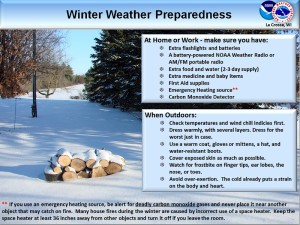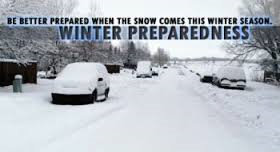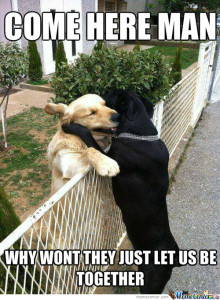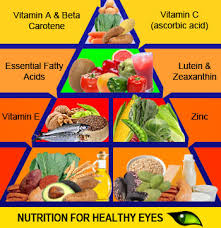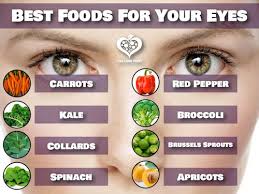



Well from different perspectives of professionals in why the human acts like this and here is my first one of Dr. K. Sohail:
When angry human beings act violently and aggressively, other caring and compassionate human beings sometimes tell them that they are acting like animals. Given the level of violence in the contemporary world, I would not be surprised to hear of some kind animals saying to other cruel animals that they were acting like humans. Eric Fromm in his famous book The Anatomy of Human Destructiveness shares his insight that animals express benign violence—they kill only in self defense or when they are hungry. Even a lion is peaceful when he is not hungry and does not feel threatened. On the other hand, humans are worse than animals as they exhibit malignant violence—they add a series of meanings to their violence. They justify their violent crimes and rationalize their aggressive acts.
When we study the history of humanity we realize that the intensity and severity of human violence and aggression has increased over the centuries. Only in the 20th century millions of humans have been killed by other humans by pre-meditated murder, including the use of nuclear weapons. If we review human murders we can classify them into the following seven groups based on emotional, social, religious, economic or political motivation.
- PERSONAL REVENGE
There are many people in every community who have difficulties controlling their anger. If someone hurts them, rather than forgiving or reporting the matter to the authorities, they take the law into their own hands and kill their enemy.
- SERIAL KILLERS
While some people kill people that they know intimately, there are others who kill strangers. We call them serial killers and mass murderers. These serial killers, who were usually physically, emotionally and sexually abused as children, became revengeful against a particular group, be they blacks, whites or women, gays or Hispanics, whom they killed indiscriminately until they were caught by police. Many such serial killers have psychopathic and sociopathic personalities.
- SOCIAL VIOLENCE OF GANGS
As more and more people move from villages to cities and adopt an urban lifestyle, they face the pains of migration, social alienation and unemployment and some of them become involved in violent gangs to sell drugs to make quick money. Unfortunately, once they enter the drug and gang culture it is difficult for them to leave for too many.
- MENTAL ILLNESS
While the majority of murders are committed by psychopaths who do not suffer from mental illness, there are some murders committed by people who suffer from schizophrenia, manic depressive illness and paranoid psychosis.
- POLITICAL / NATIONAL VIOLENCE
As the concept of nationalism became popular in the West, states created national armies. Over the centuries, soldiers in the uniform of one country killed only the soldiers of the enemy army. As guerrilla war became popular, both sides have been killing innocent men, women and children. Some call it using human shields while others call it collateral damage. Innocent citizens are being killed with no twinge of conscience on either side. Can understand the few for the many who won’t stop hurting people continuously like ISIS for example.
- VIOLENCE OF RELIGIOUS FUNDAMENTALISTS
Over the centuries believers have killed each other in the name of God. In the last few decades there have been a large number of killings between Sunnis and Shiites, Catholics and Protestants, Hindus and Muslims, and Muslims and Jews in different parts of the world.
Really in the name of your God killing is allowed. If so not a great philosophy of your religion.
- INTERNATIONAL VIOLENCE
In the recent past, Western governments have been sending their armies to other countries and invading sovereign states in order to topple their governments; they have killed innocent civilians and then rationalized their murders in the name of democracy, human rights and freedom.
Dr. Bruce D. Perry, M.D., Ph.D., is an internationally recognized authority on brain development and children in crisis. Dr. Perry leads the Child Trauma Academy, a pioneering center providing service, research and training in the area of child maltreatment. See what comments from his patients have said and it may shock you.
What he says in why do we humans do it? Why didn’t anyone see this coming? Why didn’t anyone intervene and prevent them from killing? How can we prevent anything like that from happening again?
Experts in crime, mental health, education, and social sciences have all been trying to understand the pathways to school violence. A few common observations emerge. The first, and most disturbing, is that human beings, like few other species, are pervasively aggressive, violent and murderous to each other. The major predators of humans are other humans.
The second important point is that all violence is not the same. Some violence is due to impulsive behavior, some due to the disinhibition by drugs or alcohol, some due to serious mental illness, some to hate, revenge, or retribution.
Yet this should not stop us from trying to understand and prevent violence. We know that not all humans kill. And some societies are more violent than others. So what do we know about the conditions that increase violence? What observations are common across cultures and through history when violence emerges?
- When we become desensitized to death or killing, violence increases. When death and violence surrounds someone, the value of human life can diminish and the horror of violent death can decrease. In Europe during the Black Plague, up to half the people in a village could die in a few months. The survivors often migrated to medieval cities and, soon afterwards, the rates of violence and murder skyrocketed, exceeding the rates of killing in modern New York. Pervasive death desensitizes. Pervasive violence desensitizes. In the United States, while we have been spared the horrors of war in our land and plague, we will self-expose ourselves to remarkable violence. We will watch 200,000 graphic violent acts on TV by age 18. Too many of us have become desensitized to violent acts, not realizing the true effects of a bullet passing through a human body.
“That’s so cool. Look at his head explode.” Spoken by a nine-year-old boy watching TV. His aggressive behaviors in school were so disruptive that he was placed in a special classroom.
Being part of the solution: Don’t watch so much violence. It is everywhere, but try to watch less. Certainly if you are watching and someone younger is in the room, turn the channel, get them out and help younger children see less violence. Try to see what a bullet really does. A little research can teach you more about violence than a lifetime of TV or movies.
- When we become more detached from each other and from common unifying beliefs, violence increases. Without being connected to others, we care less for their welfare. When we share common bonds of belief and value with others, we are less likely to be aggressive or violent to others in our community.
Being part of the solution: Be part of something — at school or outside. Spend time with friends, in structured and non-structured activities. Talk, listen, laugh and be together. Time with friends, family, teammates, and classmates promote healthy social or emotional relationships.
- When we allow hateful ideologies to make groups or classes of people to be viewed as different, bad or even less than human, violence increases. All too often, violence is linked to hate. Hateful beliefs such as racism, anti-Semitism and misogyny allow whole groups to be dehumanized.
“They were just camel jockeys. They don’t belong in this country anyway. I don’t see what the big deal is. It’s not like we robbed a priest.” Comments from an interview with a fifteen-year-old boy who participated in an armed robbery at a convenience store run by a family from Lebanon.
Being part of the solution: Be intolerant of intolerance.
.4. When we are under the influence of alcohol or drugs, violence increases.
“I don’t remember why it even started. We had a lot of beers and smoked some reefer. I didn’t think he would die.” A comment from a 17-year-old-boy who was one of three who beat a classmate to death at a party after a fight broke out — apparently about a parking place.
Being part of the solution: Stay away from alcohol and drugs. And if you won’t, be moderate in your use, and be with people you know and trust in places that are safe. Stay off the roads. Don’t ever pressure someone else to drink or use. Let them make up their own choices. And be prepared to live with the consequences of your choice. Grown-up behaviors have grown-up consequences. Hundreds of youth die each year due to the influence of alcohol or other drugs.
Over the last few generations, two new observations have emerged. There are some unique properties to our recent wave of violence in the United States.
- We have become more efficient and practiced at killing behaviors. Five thousand years ago, a drunk, isolated, hateful person could try to kill, but would be limited by the means at hand. There were no handguns, no automatic weapons, and no explosives. They could kill one or two in an incident. Today, in a single fit of rage and hate, one person with automatic weapons can kill dozens of people. Today, one hateful person can bomb a building and kill hundreds. We have more available and efficient means to kill. And we are practicing. In the games we play — paintball, video games, and simulated war games — we are becoming practiced in the behaviors required to kill.
“It was pretty strange. I just raised up the rifle and shot. Just like I had a million times when I was a kid. It was just a little pop. And he just looked at me. And then slumped down. I was just trying to warn him. I didn’t think it would kill him.” From an interview with a 13-year-old boy who killed another youth.
Being part of the solution: Decrease the amount of time spent playing violent video games or practicing lethal behaviors. If you see younger children “playing” at killing, see if you can help them find other ways to channel their energies.
- We have easy access to handguns. There is ready availability of lethal weapons in our society. Handguns, rifles, automatic weapons are all easily purchased — legally and illegally. Children and youth can get guns. When someone is angry, drunk or hateful, the gun allows him or her to act in lethal ways. What may have been a fistfight becomes a murder. The availability of guns increases the probability of lethal violence.
Remember one thing more crimes of killing people are due to people with not licensed guns as opposed to stolen ones. So if taking guns away from legalized guns from individuals than it won’t change the crime rate by far.
“My dad just kept it in the drawer by his bed. I wanted to scare these guys that were messing with me at school. So I put it in my backpack and took it to school.” From an interview with a nine-year-old child who took a loaded handgun to school. The problem here is if your going to have a gun LOCK IT UP where the child has no access; including height (out of reach with locked).
Being part of the solution: Don’t play with guns. Use guns with supervision only if legal gun and a adult over 21 y/o. Never take guns to school. Never mix drinking and shooting. Don’t carry a weapon. And if your family has a gun, help your parents come up with a safe place to keep it.
Tage Rai is a post-doctoral research fellow at the Ford Center for Global Citizenship at the Kellogg School of Management at Northwestern University in Illinois. He is the co-author, with Alan Fiske, of Virtuous Violence (2014). From their point of view on this topic they say:
While we may never understand Columbine, we do know that we can help prevent more violence. We are not helpless. We know that acting in these six areas can decrease violence. Each of us plays a role. We are all part of a solution to school violence.
People seem to be able to invent all sorts of rationales for mass killing without feeling the need to cite the will of God. For example, just a few days prior to the September 11 attacks, two young men from the Sacramento area each killed half a dozen people, apparently out of personal revenge. And some of the most appalling atrocities in history have been rooted not in religion per se but rather in racial or class hatred. There may even be a genetic tendency in our species, like that of our chimpanzee relatives, to attack and kill others for no reason except that they aren’t “one of us.” (Wrangham and Peterson) But religious violence can take on a particularly intense and ruthless character, if the objects of that violence are seen as blaspheming or insulting God, as the enemies of God or God’s way narrowly conceived. The problem of indiscriminate holy war is particularly difficult for Judaism, Christianity, and Islam to eliminate from within because it’s so deeply rooted in their scriptures and traditions.
The ending good light to this article is most of us will never engage in an act of extreme brutality. We will never shoot, stab, or beat someone to death. We will never rape another human being or set them on fire. We will never strap a bomb to our chests and detonate ourselves in a crowded café. And so, when faced with these seemingly senseless acts, we find ourselves at a loss. What possible purpose could they serve? Fundamentally, why do people hurt and kill one another?
It sounds like an unanswerable question. Yet there is an answer. It is simple, powerful and very disturbing. We fail to recognize it almost everywhere it matters. But if we really want to solve the problem of violence, there is nothing for it. We have to risk a kind of understanding that threatens our own values, our own way of life. We have to gaze into an abyss.
